Perk Up with 6 Tasteful Malaysian Drinks
Lighten your mood and rejuvenate your senses with 6 must-try Malaysian drinks!
Discover the authentic in Asian cuisine food
Around the World, Tips & Tricks
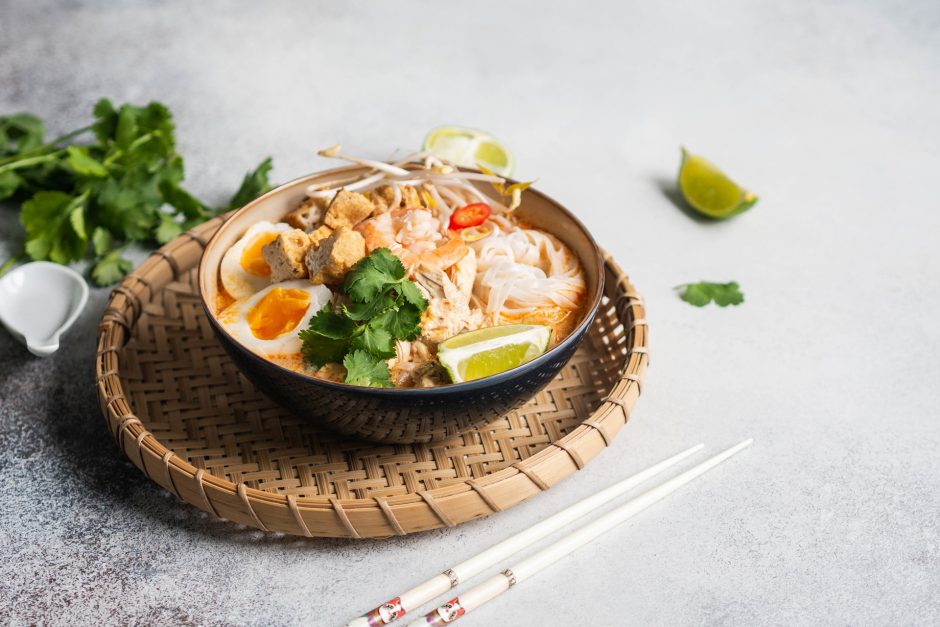
Southeast Asia has always been a melting pot of many cultures, even before colonial times. Sea trade between the local archipelago and peninsulas, as well as with the ancient Indian kingdoms and Chinese empire, brought many goods, spices, ideas, beliefs and cuisines to the region. Laksa is one of the many testaments to this long history of mutual cultural exchange and peoples coming together.
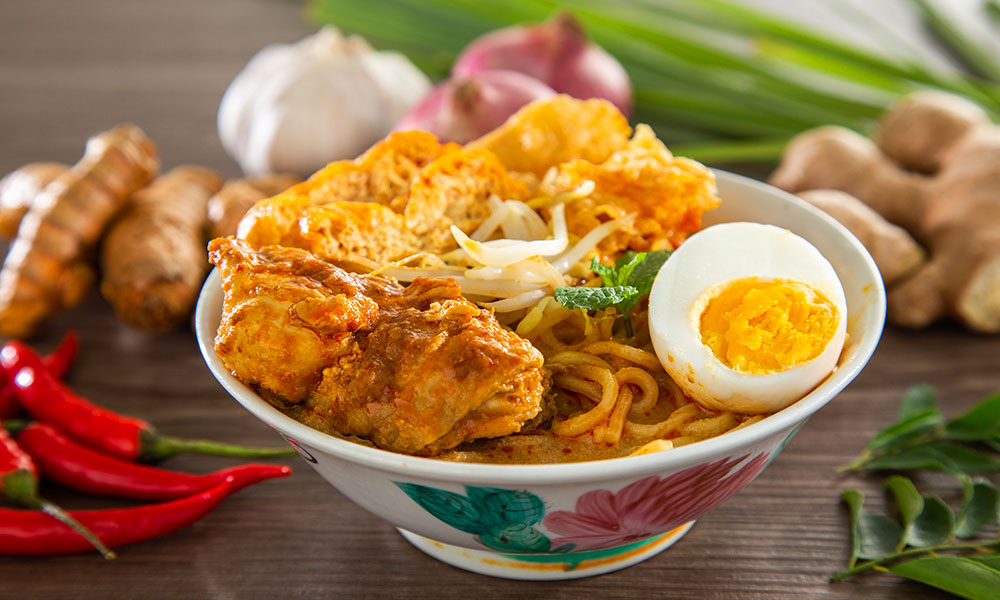
As far back as the 15th Century, Malay kingdoms had established a rapport with Chinese traders, and eventually, many chose to settle in the Malay Peninsula, inter-marrying with the locals. Thus, the Peranakan community was born, and it is believed that the first Laksa was cooked by Peranakan Chinese wives who blended their ancestral soup with local ingredients and Indian curry. The steamy, spicy and complex-flavoured soup quickly spread around the region, each taking the original recipe and adapted it with their own flavours. So, while we may think of Laksa as just another curry, every Southeast Asian nation today has their versions of Laksa.
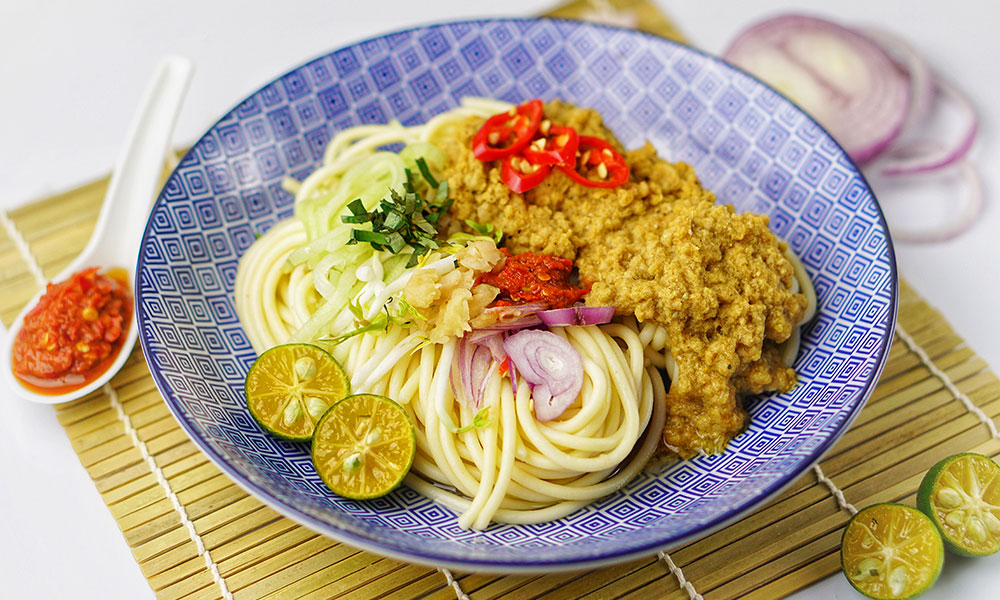
In Peninsula Malaysia, the creamy reddish curry Laksa is most distinctive in Kuala Lumpur and nearby states, but further north, sour-spicy fish-based Assam Laksa and clear-soup Laksa Utara are the staples. To the south, Laksa Johor is a salad-like dish with noodles, drizzled with thick spicy umami gravy and a pinch of hot sambal. Singapore’s Katong Laksa is less soupy but no less tasty. And, across the South China Sea to Borneo, the Sarawak Laksa blends local herbs and spices with a chicken-and-prawn-based curry soup for a wholly different flavour.
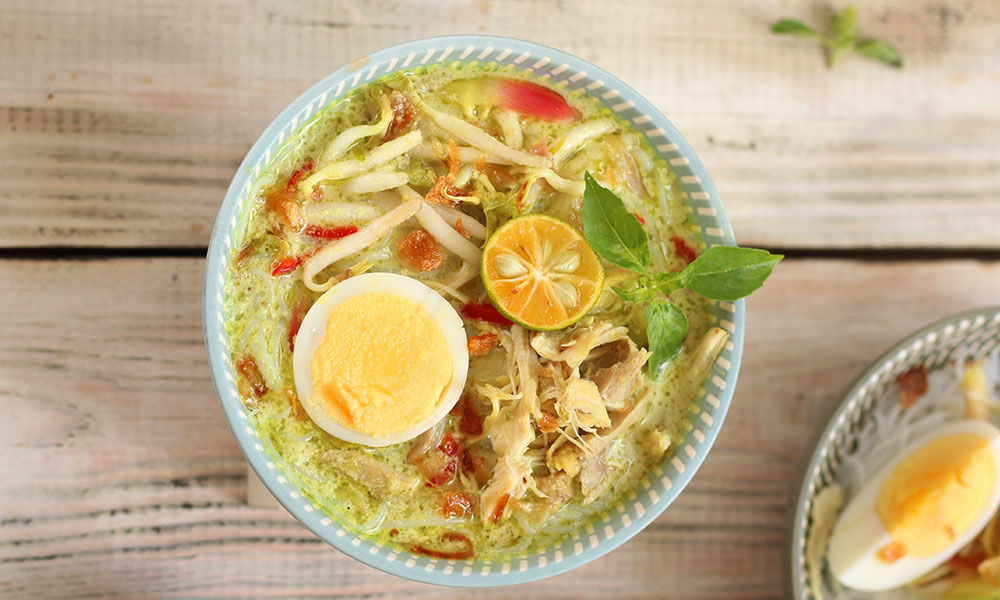
In Indonesia, Laksa Betawi from Jakarta: a turmeric, herbs and coconut-milk hot soup with noodles, chicken, bean sprouts and hard-boiled egg; garnished with mint or basil leaves. Laksa Bogor from Bogor, south of Jakarta, similar to Betawi with added vinegar for extra sourness. Laksa Palembang from the Sumatra capital city of the same name: a coconut milk and herbs based hot chicken broth served separately with boiled noodles and mashed green chilli. And many, many more.
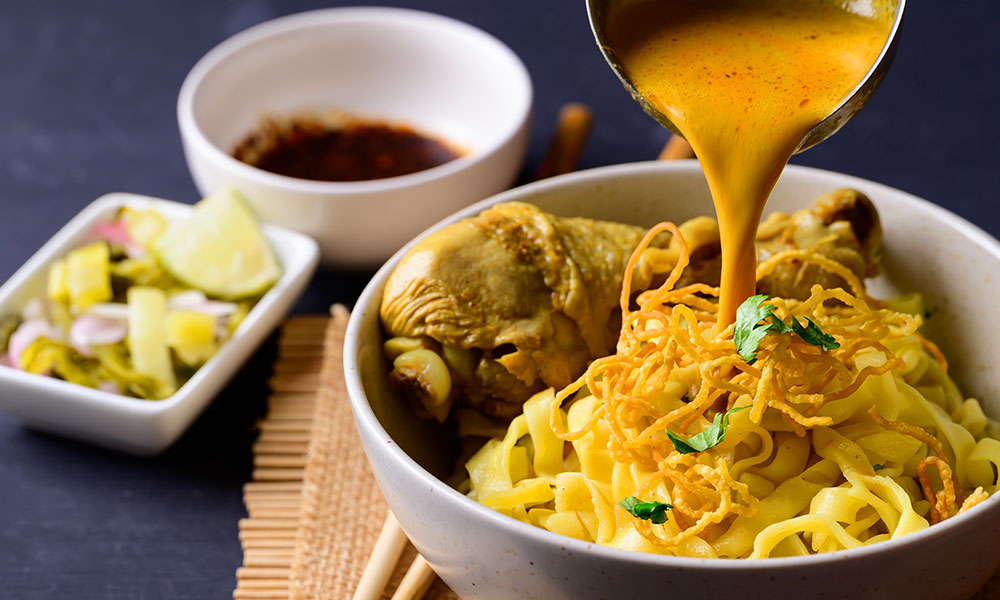
Thai Laksa also has a myriad of versions, depending on which region. According to Laksa enthusiast Karen Chan, “it’s the contrasting flavour pairings that whet the appetite: the creaminess of coconut milk, sourness from tamarind or limes, sweetness from palm sugar with salty fish sauce; and then the wide variety of herbs like mints, chilli, lemongrass, kaffir lime leaves, basil, coriander… the list goes on.”
Probably why the dish is named Laksa – the Hindi numerical word with Sanskrit origins for ‘One Hundred Thousand’; another testament to its rich history of cultural amalgamation.

But while Southeast Asia is sunny and rainy all year round, the Laksa is actually great for winter. For Karen Chan, “a small bowl of piping hot Laksa goes a long way and just hits the spot on a cold day.” You can also tailor it to your preference. Heavy on meat, carb-loaded, vegetarian, or even chilli-free; a good bowl of Laksa always excites and satisfies.
The secret for Karen Chan is the herbs and salt.
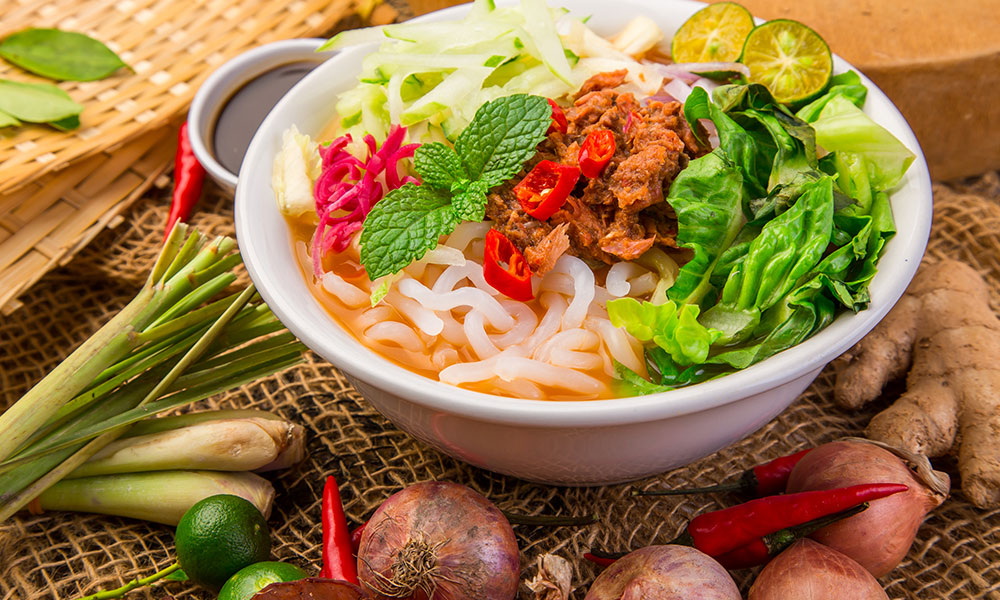
“Laksa broth is like any curry where saltiness elevates the dish, and it should go a touch further, considering the noodles and condiments will dilute the broth when served.”
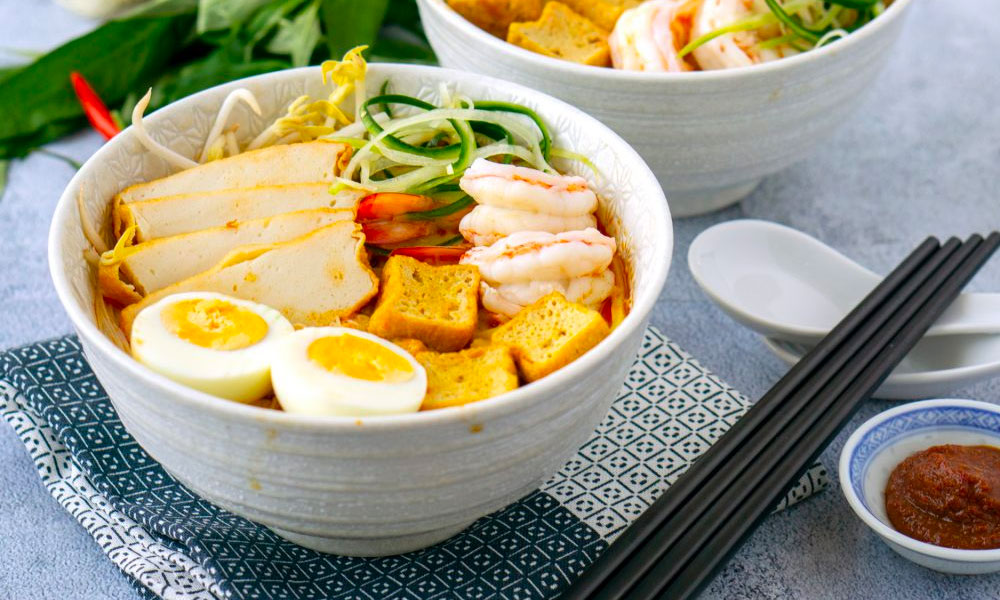
So, feel like trying this hot, piquant and complex wonder for yourself? Get started with the basic Curry Laksa or Assam Laksa!

Lighten your mood and rejuvenate your senses with 6 must-try Malaysian drinks!

Pair your hearty barbecues with these refreshing Asian delights!

What are the properties of ginger, and how to pick, store and use ginger in your cooking? Find out here!